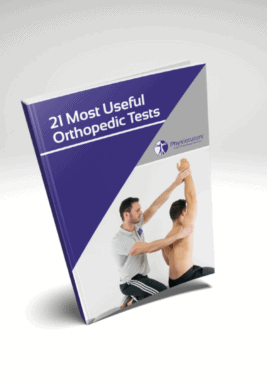Learn
Accessory Nerve | Cranial Nerve XI / CN XI Assessment
The accessory nerve (CN XI) is formed by cranial and spinal contributions. The cranial roots are functionally identical to the vagus nerve. The spinal roots innervate the sternocleidomastoid and upper part of the trapezius muscle. No diagnostic accuracy studies are available on these assessments so the clinical value is unknown
With the patient in sitting position inspect the neck are for atrophy. If no atrophy is apparent ask him to shrug his shoulders and not let you push the shoulders down. This assesses the upper trapezius.
For the sternocleidomastoid, ask the patient to rotate the head in both directions against your resistance.
21 OF THE MOST USEFUL ORTHOPAEDIC TESTS IN CLINICAL PRACTICE

Learn more about the assessment of all cranial nerves below:
- Cranial Nerve I: Olfactory Nerve
- Cranial Nerve II: Optic Nerve
- Cranial Nerve III: Oculomotor Nerve
- Cranial Nerve IV: Trochlear Nerve
- Cranial Nerve V: Trigeminal Nerve
- Cranial Nerve VI: Abducens Nerve
- Cranial Nerve VII: Facial Nerve
- Cranial Nerve VIII: Vestibulocochlear Nerve
- Cranial Nerve IX: Glossopharyngeal Nerve
- Cranial Nerve X: Vagus Nerve
- Cranial Nerve XII: Hypoglossal Nerve
Like what you’re learning?
BUY THE FULL PHYSIOTUTORS ASSESSMENT BOOK
- 600+ Pages e-Book
- Interactive Content (Direct Video Demonstration, PubMed articles)
- Statistical Values for all Special Tests from the latest research
- Available in 🇬🇧 🇩🇪 🇫🇷 🇪🇸 🇮🇹 🇵🇹 🇹🇷
- And much more!








